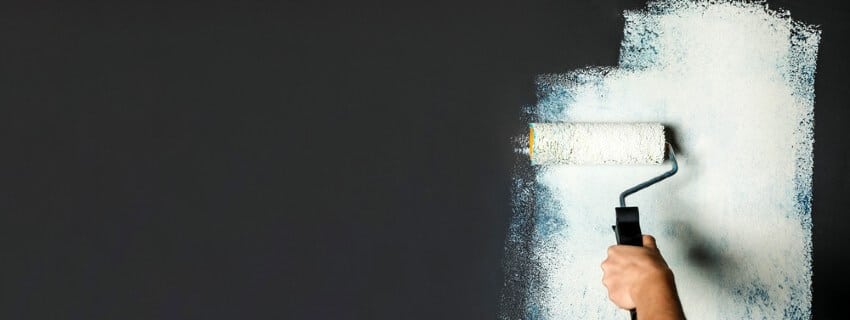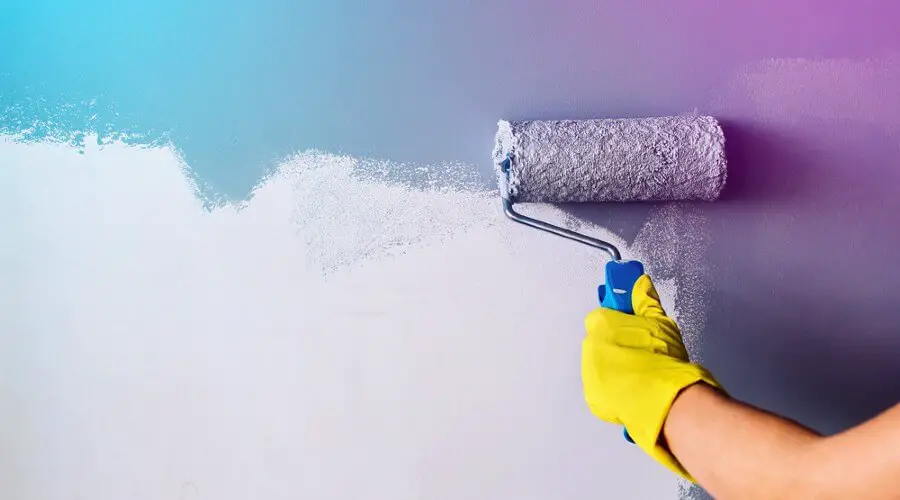You might be wondering if you need to acquire a screen after purchasing a video projector for home use. Yes, for the most part. Get a decent screen for your projector if you want your projection or image to look its best. Some vendors provide a bundle deal that includes both the screen and the projector.
On the other hand, some consumers prefer to save money by using their own wall or a DIY screen. Not every projector comes with its own screen. A plain white wall may be sufficient, depending on how smooth and reflective it is.
How do you tell the difference between projector paint and projector screen (Projector Paint vs. Screen)? Continue reading to learn more.
What Is Projector Paint? What is the Purpose of a Projector Screen?
What makes a projector screen different from a bucket of projector paint? Unlike the usual paint you use on your wall to prepare it for projector use, a bucket of projector paint is extra-reflective. It works well on fences, an old blanket, or any other flat surface.
A projector screen, on the other hand, is a large screen (100 inches or larger) that you can hang it on your ceiling or wall to see your projector’s image without it looking worn or warped. Unlike a standard wall, a projector screen may produce images that are so brilliant that they appear on an HDTV screen.
To be sure, any flaws in a homemade or improvised screen can be concealed using tactics such as blacking out the room from any light source. When it comes down to it, though, a projector screen appears to be the more convenient way to watch movies or TV episodes with a projector.
Is it cheaper to apply screen paint on a wall rather than a screen? It may be determined by the size of the wall. If the wall is large, it may be less expensive just to hang a 100-inch or 120-inch screen over it.
Is It Possible to Watch Projector Videos on Wall, Old Blanket, or Fence?
Yes, you can save money by adopting an alternative to a projector screen. Because you perform the work, the labor is free. If you’re spending money on labor to make a wall or a blanket or a wall look like a screen, keep prices to $50-$100, or whatever the cost of a screen is.
However, if you utilize a wall without screen paint, you can expect some visual degradation. Although bare walls can be used to protect images, the quality is inferior to that of employing a projection screen. This is particularly true of high-end displays.
Some panels are so fantastic that they make you feel as if you’re watching a massive HDTV (which has a monitor or screen that produces its own light, leading to the crispest and sharpest of vibrant videos). A screen will reflect picture light better than a wall painted with conventional paint.
The same can be said about a blanket or bed sheet, which, if not fully stretched, might reduce the image’s integrity or even sharpness. Some paints and image colors, for example, may absorb rather than reflect light.
What Difference Does Projector Paint Make?

A surface that has been painted with projector paint becomes more reflecting. However, it will not make a rough wall surface smooth enough to accept a projector image without blurring or distorting it.
You’ll still need to sand and grind down the wall or fence you’ll be utilizing to make it projector screen-ready. Fabrics and textiles such as old blankets and bedsheets, on the other hand, must be stretched out like a painting canvas to work.
The following are some of the projector paint possibilities.
- White: White paint provides the most quality and neutral gain for your projected image. For painting on screens or walls, we propose Digital Image Ultra White Screen Paint, as well as DIY screen alternatives (like a bed sheet or blanket).
[amazon box=”B00DSCZD6S”]
- Gray: Gray paint is ideal for increasing dark levels and contrast. Some argue that it isn’t essential because of DLP technology. Others argue that it is still useful, particularly in regions with natural light. It is suggested that you use the Projector Screen Paint 3D4K Light Grey Silver with 2.4 Gain.
[amazon box=”B071F31JKF”]
- Silver: Silver projector paint, a highly reflective sort of paint, was utilized in the days when projectors didn’t have as brilliant light lights (in some cases, gas lamps were utilized).
However, it is prone to hot-spotting, so look for paint with good diffusion capabilities. We recommend Projector Screen Paint (S1 Screen Paint Silver) for the silver screen.
[amazon box=”B005ICJ2HM”]
- Black: Paint on Screen Best Projector Screen Paint Black with 1.2 Gain is recommended if you wish to color your wall black. Black also necessitates adjusting your projector’s brightness settings and keeping an eye out for hot patches.
If you don’t care about different colors for your DIY screen, we can recommend ProClassic Smooth Enamel Satin Finish or Stewart Filmscreen Studiotek 100.
Homemade Wall Screen vs. Real Projector Screen
It’s a ready-made projector screen that provides the highest possible definition and quality. A DIY screen can accomplish this, but only if the person doing the work is capable of doing it. The shiny screen paint, thankfully, helps to balance out the effort.
Before painting the screen paint, the DIY homeowner must either use a grinder to smooth down the wall or stretch out the bedsheet over a frame like a painter’s canvas.
When it comes down to it, the flatness of your DIY or ready-made projector screen is crucial for image fidelity. To properly reflect the light, an ultra-smooth surface is required.
More Things to Consider
You could believe that a plain wall will suffice, but it won’t. The purpose of a screen is to recreate high-definition quality over a larger surface area so that your projector’s projection appears to have come directly from an HDTV. A naked wall or any other type of DIY screen won’t usually suffice.
Unless you’re prepared to put in the time and money to make your own wall, blanket, bedsheet, tarp, or fence into a working DIY screen, a ready-made screen is the best way to have the finest viewing experience.
-our editorial board has reviewed this article and has been approved for publication according to our editorial policy.

